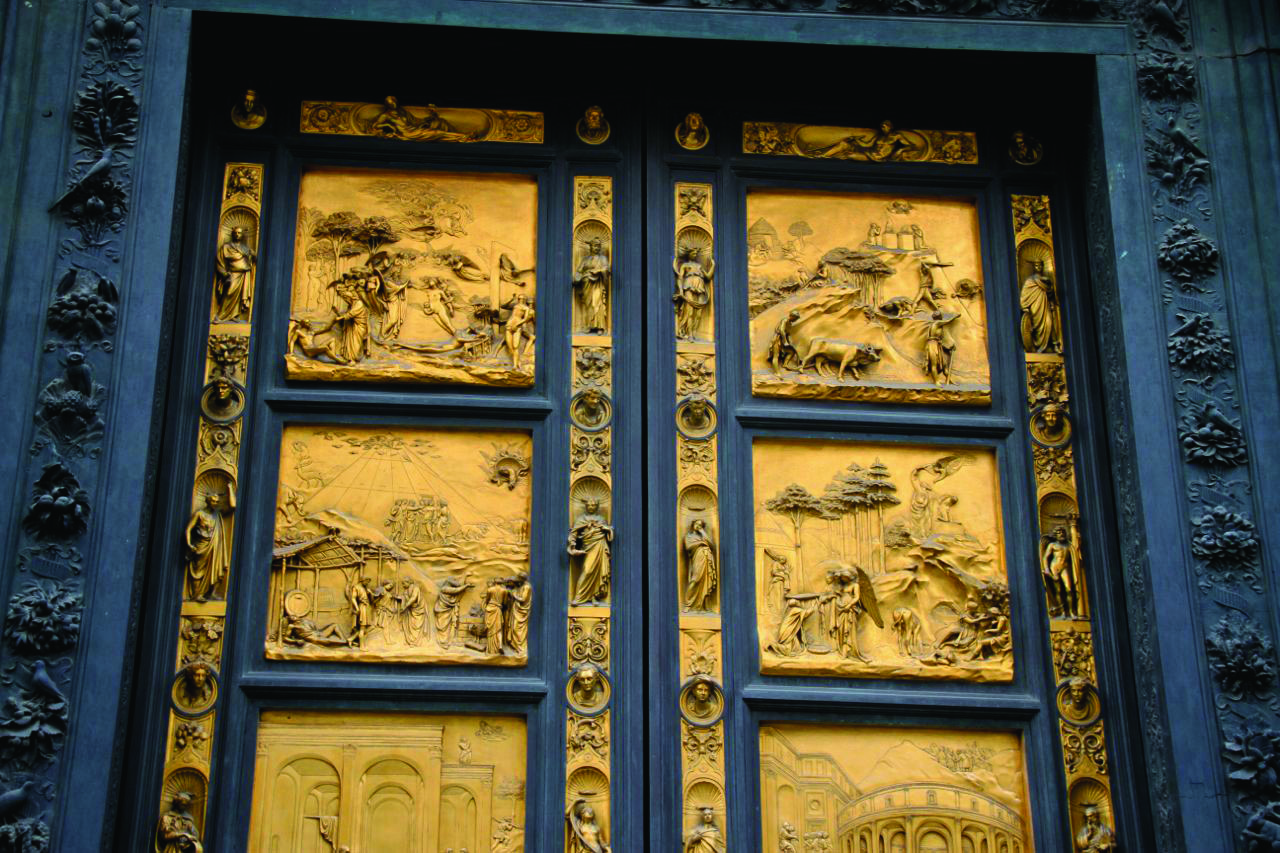Ghiberti’s doors are a splendid masterpiece of what would become the characteristic of Renaissance art – spatial realism with people and buildings shown proportionately.

The bronze, gold-covered doors of the Florentine Baptistery opposite the entrance to the Cathedral are one of the masterpieces of the early Renaissance period. They were 25 years in the making (1425-1450) by Lorenzo Ghiberti and his workshop and then installed on the eastern side of the baptistery in 1452. The ten panels, shown in bas-relief, depict the Old Testament in synthesis, arranged chronologically. The top left panel depicts Creation and, moving from left to right, the cycle finishes with the meeting of King Solomon and the Queen of Sheba in the Temple. These doors are the second set of bronze doors Ghiberti had completed for the Baptistery; his first (on the northern side of the building) he had done with his workshop during the two decades immediately before. His second set, however, steal the show for their brilliance, innovation, ingenuity and modernity.
Ghiberti won a competition held in 1401 for the commission of the bronze doors. Seven artisans had applied, submitting a competition panel in bronze bas relief depicting the sacrifice of Isaac. The 34 judges, selected from the important families of the city, awarded the youngest of the competitors, Lorenzo Ghiberti, 20 years old at the time, the prestigious and coveted commission. He had trained as a goldsmith under his stepfather but was not yet a member of the guild (goldsmiths were obliged to pay dues to the silk guild). In 1425, after the completion of the first set, he was immediately given the commission for the second and most famous, doors.
Bronze cost ten times more than marble and few other cities could afford this type of investment, but the Baptistery was one of the most important and loved buildings in the city, as John the Baptist was the patron saint of the great Florentine Republic. All visitors to the city could be expected to visit the cathedral square and so these huge decorative commissions for cathedral squares were a political statement for the greatness of the city as a whole as much as a religious statement.
Ghiberti’s second set of doors display the first monumental use of mathematical perspective in modern art history. His nemesis, fellow Florentine Filippo Brunelleschi, who had been one of the unsuccessful competitors for the doors in 1401-2, had invented mathematical perspective around 1416, which enabled the artists to create the illusion of three dimensions on the two-dimensional surface. This is absent from Ghiberti’s first set doors with the 28 quatrefoil panels; however, his second set of doors is a splendid masterpiece of what was to become the defining characteristic of Renaissance art: spatial realism with people and buildings shown proportionately in relation to their surroundings.
Art had been progressively gaining a more humanist touch during the decades prior to Ghiberti’s work. There was more facial expression, a greater sense of movement in the figures and a less symbolic (icon style) representation: a movement towards a more realistic representation of the subjects. The invention of mathematical perspective was the last and great crowning tool to really show true representation of the here and now. Art reflects how people thought at the time; the gold doors are testament that Florence in the middle of the 1400s had placed once more humankind in prime position, something that had not really been seen since Antiquity.
